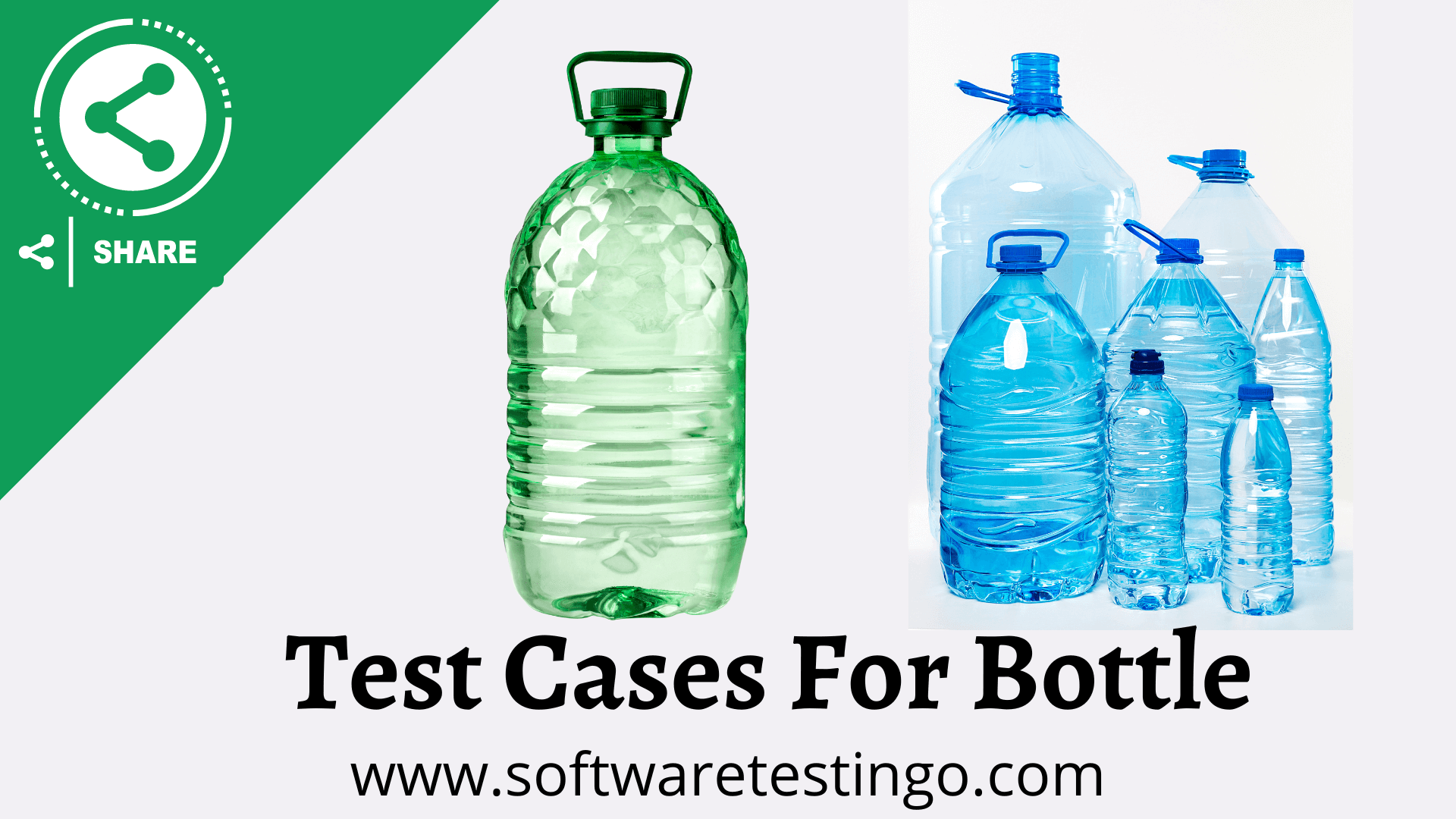Test Cases For Bottles: In this post, we will discuss the possible test cases for bottles or scenarios for water bottles. So before going to write the test cases for water bottles, I suggest asking yourself a few questions like how to test a water bottle, I would have liked to ask a few questions like:
- Is it a bottle of glass, plastic, rubber, metal, disposable material, or anything else?
- Is it meant only to hold water, or can we use it with other fluids like tea, coffee, soft drinks, hot chocolate, soups, wine, cooking oil, vinegar, gasoline, acids, molten lava (!), etc.?
- Who is going to use this bottle? A school-going kid, a housewife, some beverage manufacturing company, an office-goer, a sportsman, a mob protesting in a rally.
| Post On: | Test Case For Water Bottle |
| Post Type: | Test Case Template |
| Published On: | www.softwaretestingo.com |
| Applicable For: | Freshers & Experience |
| Join Here: | Get Updates |
These questions may allow a tester to know better a product (that he will test). In our case, I am assuming that the water bottle is a pet bottle made up of either plastic or glass (there are two versions of the product) and is intended to be used mainly with water.
Even the manufacturing company is not sure about the targeted users! (Sounds familiar! When a software company develops a product without a clear idea about the users who will use the software!)
Test Case For Water Bottle

- Check the shape and size of the water bottle, for example, a cylinder, a bowl, a cup, a flower vase, a pen stand, or a dustbin.
- Check if the caps fit with the bottle or not.
- Check whether the bottle has any logo or not.
- Check if the color of the bottle is as per the specification document.
- Check the size of the bottle as per the requirement document.
- Check that the water bottle’s weight is as per the SRS document.
- Check if the bottle is made as per the specification document or not.
- Check the mouth of the bottle as per the SRS document.
- Check whether the user can pour the water easily or not.
- Check whether the bottle can be appropriately surfaced or not.
- Check whether the user can hold the bottle comfortably or not.
- Check whether the bottle leaks by filling it with water and putting it in a dry space.
- Check if the bottle leaks by tilting, inverting, or squeezing (in the case of the plastic bottle).
- Check the bottle by placing it in a refrigerator for cooling and see how it reacts at different temperatures.
- Check a water-filled bottle in the refrigerator for a very long time (say a week). See what happens to the water and or bottle.
- Check a water-filled bottle under freezing conditions. See if the bottle expands (if plastic-made) or breaks (if glass made).
- Check the bottle by keeping it in a microwave oven!
- Check the water bottle by pouring hot water into it and check the effect.
- Check a bottle by Keeping it dry for a very long time. See what happens. See if any physical or chemical deformation occurs to the bottle.
- Check the water test after keeping it in the bottle and see if there is any chemical change. See if it is safe to be consumed as drinking water.
- Check by putting the water in for some time and check if the smell of the water has changed.
- Drink water directly from the bottle and see if it is comfortable. Or water gets spilled while doing so.
- Check if the bottle is broken by putting some specific height (both with plastic and glass models). If it is a glass bottle, it may break in most cases. See if it breaks into tiny pieces (often difficult to clean) or large pieces (easily cleaned).
- Check the above scenario with a filled water bottle and with an empty water bottle.
- Check if the bottle is made up of recyclable material. In the case of a plastic bottle, test if it is easily crushable.
- Check if the bottle can also hold other everyday household things like honey, fruit juice, fuel, paint, turpentine, liquid wax, etc.
These were a few test ideas that occurred to me in a short session. Try to take this as a testing exercise and see if you can generate more interesting test ideas (I am sure you can). I would be more than interested in seeing your test ideas. Let me (and others) know about your test ideas by leaving behind a comment. Thanks.
